PANAMA CITY, PANAMA — There may be 117 countries with more land mass and another 131 countries ahead of it when it comes to population, but for such a small country, Panama likes to do things big.
The most southerly of the Central American nations punches above its weight class in the geopolitical ring, largely thanks to a canal that is undoubtedly one of the great construction projects of the twentieth century.
Amongst mining people, the country’s name is associated with some of the world’s biggest copper projects, with First Quantum Minerals’ (TSX: FM; US-OTC: FQVLF) Cobre Panama project and the state-controlled Cerro Colorado project both here.
Pershimco Resources (TSXV: PRO) wants to add to the country’s oversized copper reputation, and it’s pushing to realize Cerro Quema’s vast copper potential.
But to get there Cerro Quema will have to go through a metamorphosis, as the project is currently being developed as medium-scale, open-pit gold mine.
The staged development is part of the company’s grand plan to generate cash from a straightforward open-pit gold mine with a low strip ratio, and use the capital to prove up and develop what it believes will be the true company maker: a copper porphyry discovery that lurks beneath those golden oxide caps.
Cerro Quemo stretches over a 150 sq. km land package on the Azuero peninsula in Los Santos province, 45 km southwest of the city of Chitre. The landscape here is reminiscent of Bilbo Baggins’ Shire, with low, green mountains rising from a countryside divided by lines of trees demarcating farmer’s fields.
The landscape’s serenity, however, doesn’t mean it isn’t ready for the wealth that a future mine could bring.
“For us, there are no indigenous issues on the entire peninsula,” Pershimco’s president and CEO Alain Bureau says as we fly by helicopter towards the project. “There are no national parks and we are near the water, which is a good thing for copper concentrates.”
Originally from a mining family in the Abitibi region of Quebec, Bureau helped build mines for Agnico Eagle Mines and BHP Billiton in Mexico and Chile, but now calls Panama home. He beams while speaking of the country’s upside.
There is no denying that Panama is undergoing an economic renaissance. The last three years have seen impressive gross domestic product growth, typified by a 10% growth rate in 2012. The figure makes it one of the fastest-growing countries in Latin America, and puts it in the ranks of India and China on the global stage.
The institutional stability and pro-business mentality needed to achieve such growth is evident in the progress that Pershimco has already made at Cerro Quemo, with the project fully permitted for building an open-pit mine.
The rub for management and shareholders is that the existing permit allows for processing 5,000 tonnes per day on a leach pad, where the company sees better economics in a 10,000-tonne-per-day operation.
To double the mine’s size, Bureau and his team are amending the permit, with final permits for the new heap leach operation expected by mid-2015. The major issue during amendment is explaining where the mine waste will go, but when it started an environmental study roughly four years ago, the company established a baseline against which it can measure the effects of any acid generated by the waste rock. By starting such environmental assessments early and building dams to control any runoff, the company has ensured the amendment process will unfold as quickly as possible.
The work done on the dams complements the already impressive infrastructure at Cerro Quema, where a paved road runs right up to a well-appointed exploration camp. Pershimco has spent $4 million building up the camp, which includes white stucco buildings that resemble a fancy village, complete with a truck shop, power plant, laboratory and offices. Walking amidst the compound gives the impression of a company positioning itself for bigger things.
Some investors with longer memories may shudder at the thought of investing such capital for what will initially be a heap-leach operation. Panama, after all, was home to the Santa Rosa mine, a project that Greenstone Resources took a $40-million writedown on before closing for good due to heavy rainfalls that made leaching completely uneconomic.
Bureau says Cerro Quema — which is more than 200 km south of Santa Rosa — benefits from being in a different climatic zone than Santa Rosa, one that receives much less rainfall.
“We are in . . . a zone that is much drier than where Santa Rosa is,” Bureau says. Data collected by the company supports the contention, showing rainfall of 1.8 metres per year.
And Greenstone’s old mine didn’t have the lay of the land working for it.
“Santa Rosa had flood problems,” Bureau continues. “Here the rain runs off through mountain tributaries, which give us a much higher saturation point.”
It’s in the rocks
Unlocking Cerro Quema’s full potential will require mining a series of similar, mineralized gold zones that run across the hilltops from west to east. It is 8 km as the crow flies from La Pava in the west to La Pelona in the east, with Quema and Idaida encountered along the way. But the zones all unfurl within a larger 17 km long magnetite-destruction zone delineated in an airborne survey.
Of those four zones, two have National Instrument 43-101 compliant resources. Taken together, La Pava and Quema have in-pit oxide indicated resources of 20.2 million tonnes grading 0.79 gram gold for 513,100 oz. gold, and inferred resources of 4.5 million tonnes grading 0.35 gram gold for 50,600 oz. gold.
It also has in-pit sulphide indicated resources of 2.75 million tonnes grading 0.64 gram gold and 0.24% copper for 57,000 oz. gold. These numbers come out of a resource estimate completed in September 2012.
The deposits are part of a high-sulphidation epithermal system characterized by widespread hydrothermal alteration that forms concentric halos.
Mineralization consists of disseminated pyrite, chalcopyrite and enargite, and stockworks of quartz, pyrite, chalcopyrite and barite, with traces of galena and sphalerite. Gold occurs as disseminated microscopic grains of native gold and as invisible gold within the pyrite.
All of that geo-speak boils down to that fact that the oxide zone represents a great opportunity for a classic heap-leach scenario — gold is in limonite, not in silica — so there are no encapsulation issues.
Since the resource calculation quoted above, Pershimco has done more drilling within the La Pava zone to optimize the open-pit boundary. The emphasis at the deposit is in accord with the area’s past operators. Like Pershimco, former operators were enticed by the deposit’s near-term potential thanks to its near-surface expression and overall higher grade.
Pershimco carried out 38,000 metres of reverse-circulation and diamond drilling from 2012 to the end of last year at La Pava. The drilling returned impressive results, such as 45 metres grading 2.01 grams gold, 267 metres grading 0.89 gram gold and 128 metres grading 1.41 grams gold.
But Bureau says that Pershimco differs from its predecessors in that “other companies worked on La Pava on its own, but we saw it as part of a whole system.”
This new perspective led to the company exploring dep
ths that past operators ignored, and once its drills got down to the 400-metre level, the core brought to surface showed the rock was losing its magnetite, and had relic stockwork-sheeted quartz and worm veins characteristic of the rocks found just before drills struck the famed Peruvian porphyries.
Hitting such positive signs told the company two things: it seemed to be on the right path, and there was a lot of work ahead.
“We’re not right in the heart of the porphyry yet,” Bureau concedes, but the planned deep-hole program underway should shed more light on the project’s true potential.
The company is finishing the program’s first hole, which goes down 1,000 metres, and Bureau says it will take six weeks to drill each hole thereafter, with results released as they become available. He expects to release an update on the first hole sometime this month.
The deep-hole program picks up from where a lost hole testing the depths beneath Quema left off. The hole collapsed at the 500-metre level, after the ground fractured when it ran into underground cavities. Bureau says there was still good core recovery from before the collapse and describes the results — which are yet to be released — as visually interesting over the last 150 metres.
The company is taking its next attempt at a deep drill hole at Idaida, which is southeast of Quema. While Idaida isn’t part of the near-term operational plans as La Pava and Quema are, the zone has already offered a glimpse into what the greater depths at Cerro Quema could hold.
Two holes drilled last year show the site’s copper upside at depth, as well as its closer-to-surface potential. The first hole cut through 84 metres of the gold oxide zone before hitting the sulphide zone and returning 73 metres with a grade of 1.77% copper and 2.03 grams gold, while the second hole hit 145 metres of 0.91% copper and 1.56 grams gold beneath the oxide cap.
Despite these notable intercepts, what really bolsters Bureau and his team’s confidence is the lower-grade material deeper down, as the second hole encountered 58 metres grading 0.38% copper and 0.7 gram gold at the 388-metre level.
While these grades do not impress on their own, they show there is mineralization at depth — and when combined with the abundant indicators from greater depths at Quema and La Pava, Pershimco is interpreting the results at Idaida as possibly catching the edge of a large porphyry.
To understand exactly why Bureau and his team are so confident in Cerro Quema’s deep potential, it is best to start from the top and work down.
The gold mineralization in all of the oxide zones is associated with iron oxides sitting on top of the upper-level feeder zone. Next down the depth chart is the upper level feeder zone, which is made up of supergene copper sulphide mineralization.
Beneath that is the mid-level feeder zone, which hosts hypogene copper and arsenic sulphide mineralization. It is here that the company has found the worm veins and mottle textures that are seen in deposits such as Yanacocha in Peru, which hosts a world-class, copper–gold porphyry.
Next is the lower-level feeder zone, which is made up of hypogene copper and molybdenite sulphide mineralization. This zone indicates higher-temperature mineralization deep down, associated with the root zones of high-sulphidation copper gold sulphide feeder zones.
Pershimco encountered early porphyry style quartz veining in the lower-level feeder zone. The presence of what are known as ghosted quartz B veins, which have been found at depth in the lower feeder zone, is a strong indicator of possible early porphyry veining, overprinted by advanced argillic alteration and copper–gold sulphide mineralization.
Bureau offers up Intrepid Mines’ (TSX: IAU; US-OTC: IAUFF) Tujuh Bukit discovery in Indonesia as the most suitable comparison for what Pershimco believes is happening at Cerro Quemo. Tujuh Bukit has sulphide resources of 25 million oz. gold and 15 billion lb. copper.
A history of missed opportunities?
Pershimco acquired Cerro Quema in 2010 in a sweeping deal that brought Central Sun Mining, RNC Gold, MCQ, Careana Equities and Bellhaven Copper & Gold (TSXV: BHV; US-OTC: BHVCF) to the table. In the end it cost the company $6.4 million to unify the claims.
While closing the purchase, Pershimco inherited the work done by operators that got serious about the rocks in the early 1990s.
Cyprus Minera got the ball rolling in the early 1990s — a little before Greenstone Resources started igniting investors’ imaginations by producing gold across Central America. Cyprus, however, was only interested in oxide gold — at the time copper was considered more as a dirty secret to be hidden from investors, rather than an economic asset to be promoted. The strict gold focus led the company to drill over 25,000 metres between 1990 and 1994, concentrating near-surface at La Pava.
Next up was Campbell Resources, which did another 1,700 metres on La Pava in 1996. In 2002 RNC Gold completed a non 43-101 compliant feasibility study on an open pit at La Pava. The reserve estimate out of the study tallied 6.03 million tonnes grading 1.24 grams gold for 240,000 oz.
The last to take a kick at the can was Bellhaven, which drilled 800 metres in 2008 — but its efforts were thwarted somewhat, because it didn’t hold the whole project. Instead it held an option to buy out its two partners.
Bellhaven’s situation led to Pershimco realizing early on that to do Cerro Quema justice, it would have to buy out all parties.
It did just that and, after a short time, it got the feeling that it was on to something bigger than any of the past operators had imagined.
“By the end of 2012, we were getting confirmation that we had porphyry,” Bureau says. “Now we need to know its size and economic potential.”
By mid-year investors will at least get a closer look at the economics of the near-surface gold oxide potential, with the company planning to release a prefeasibility study on a heap leach mine.
Bureau says investors shouldn’t expect many changes to the resource calculations for La Pava and Quema, as drilling has focused on upgrading resources into the reserve category to optimize the mining sequence.
But make no mistake: it is the results from the drill deep beneath the oxide gold that investors will really have an eye on. And if Pershimco can deliver results showing porphyry with impressive copper grades, Panama’s already big reputation will get that much bigger.

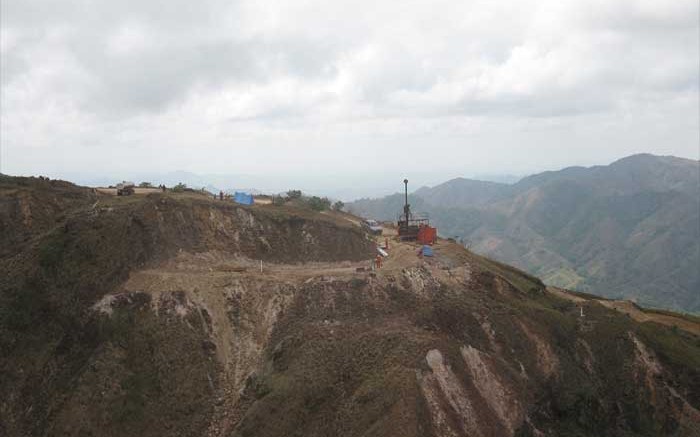
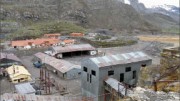
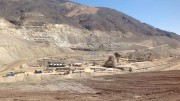
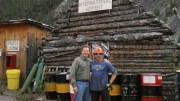
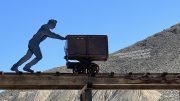
Be the first to comment on "More big things to come from little Panama"